The Leach, Blacksmith Shop
On the south-east corner of Asa and Thomas is the parking lot, an empty space which was once, and for decades, a blacksmith shop. The corner lot was bought by Elizabeth Leach in 1893, and her husband, Zechariah, known locally as Jack, opened a blacksmith shop here. Jack Leach was a well-travelled man; having grown up in Oxford Township, he served his apprenticeship as a blacksmith in Sarnia, Ontario, before travelling throughout Western Canada and parts of the United States. He returned to Kemptville in 1883, and the following year he married Elizabeth Anne Galway, of Wolford. He was 20, she was 25, and they had seven children over the next eleven years.
Jack was known throughout the region as a skilled smith and horseshoer, and his clients included some of the more successful racehorse owners in Eastern Ontario. He was a member of a number of fraternal societies in the town, as well as sitting on the Board of the Oxford Agricultural Society. He built up a successful business, served on the Town Council from 1901, and was appointed a Justice of the Peace. Zechariah “Jack” Leach died at the age of 67 in 1931.
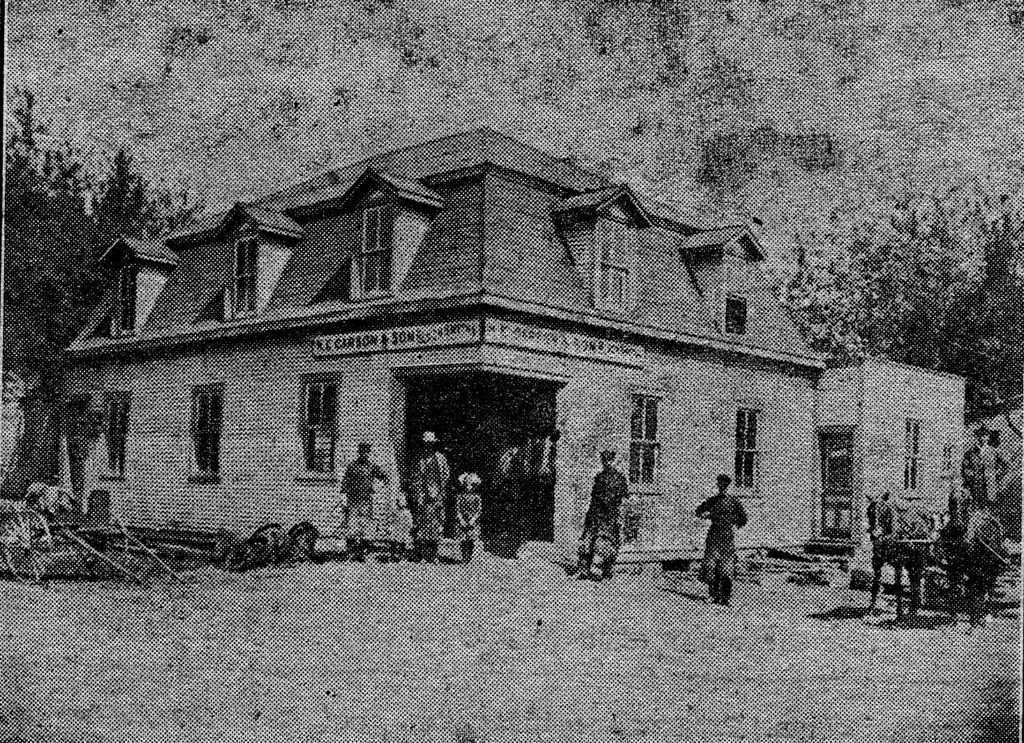
In 1909, the business was bought for $2,200, a large amount then, by Henry Carson who carried on as blacksmith (see picture). Carson sold in 1920, but the business continued. John Dobson carried on the operation until 1938, as blacksmiths began to be less in demand, when Ernest McKendry opened a feed store on the site. From 1944 until 1974, Kemptville Creameries used the building for storage. The building burned down and the site was cleared and has been used as a parking lot for the apartment building across the street since then.
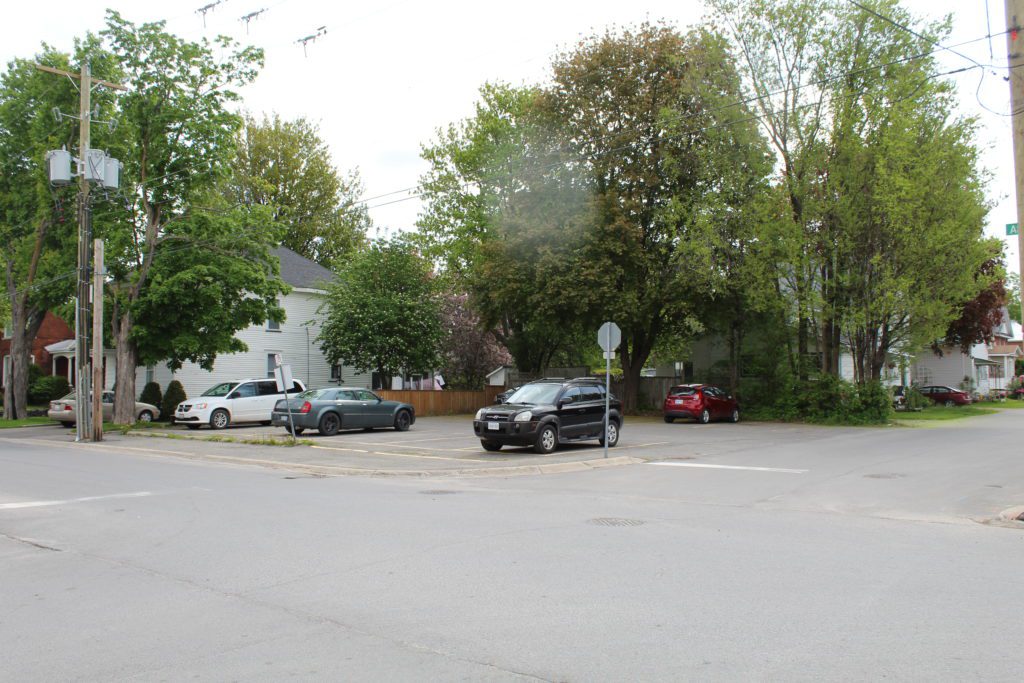

Banks Bros, Livery Stable
Chester Banks began a livery stable business here around 1883 and, with his sons, developed the business into renting out rigs for picnics and driving parties (see picture). Chester retired in 1895, leaving the business in the hands of his sons, Lancelot and Charles. The Banks brothers started a bus company, using horse-drawn carriages to transport passengers to and from the railway stations at Bedell and Kemptville, and servicing the hotels around the village. They also ran a drayage service from their livery stables, until the rise of the automobile changed the transport industry forever. The building housed both the business and the residence of the family.
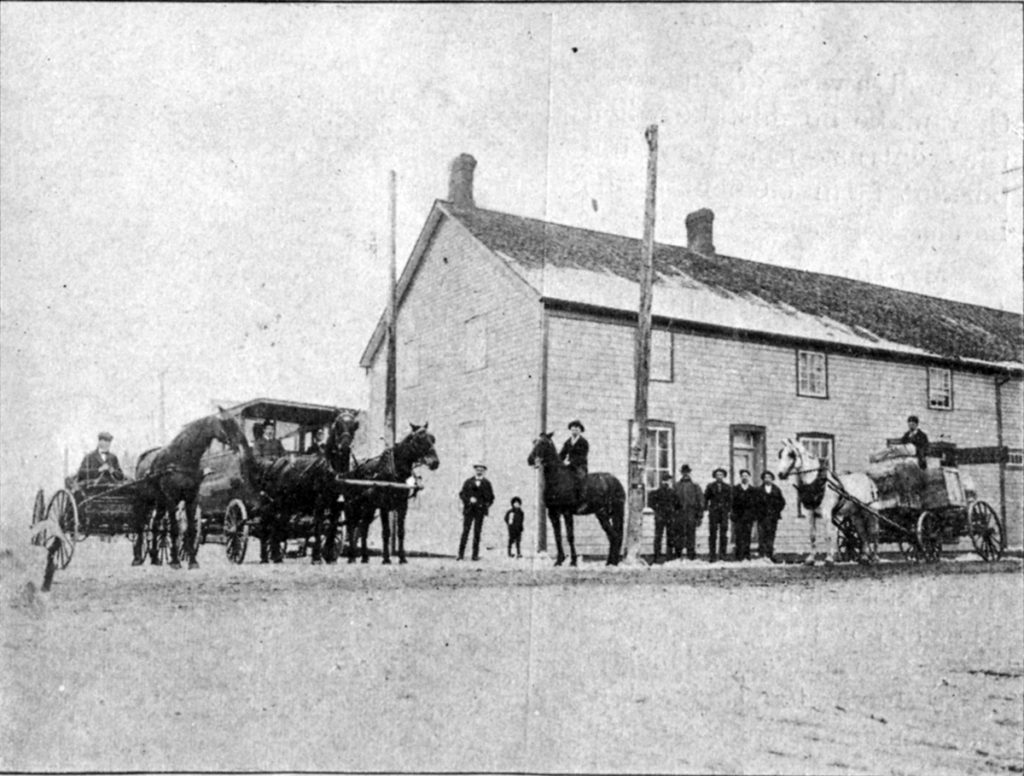

The Livery Stable was the scene of a tragedy on March 6, 1901, when Lancelot was killed during an altercation with some young men who had broken into the stable office, drunk and singing loudly as they danced on the desks. Lancelot threw them out, but they burst in again later, and, in the scuffle which followed, he was hit on the head with part of a wagon wheel.
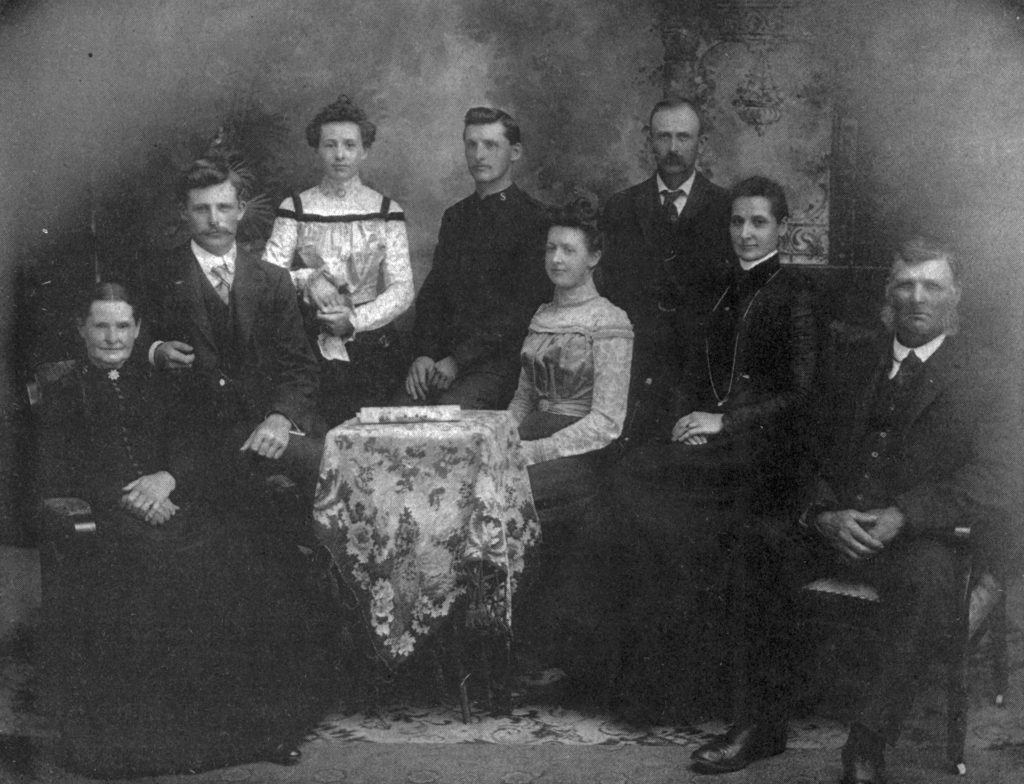

His son, Raymond ran down Thomas Street and crossed the South Branch on the ice that still held the river in its grip, to look for his uncle at Kerr’s Hotel on Clothier Street. When he got back, he found his father stumbling around the area between the office and his home, dazed and with a two-inch cut along his left temple. He helped him into his house and the doctor was called for. But the blow had fractured Banks’ skull, and caused internal bleeding. Around 3:30 the next morning, L. J. Banks, aged just 40, died. The young men were tried for murder, but were acquitted, to the amazement of all. The young men of the jury, all under 30 and none natives of Kemptville, announced that the defendants could be excused somewhat because, after all, they were drunk at the time. The Banks family sold the business to Horace Hutchins in 1906, and it changed hands a few times before the building burned down around 1915 and was not rebuilt.
In 1922, Kemptville Creameries was organised in response to Provincial legislation governing dairy products. The Creameries took out a 99-year lease on the site of the Banks stables in 1922, at the rate of just $10 per year. In addition to making butter, a cold storage department was added to the Creamery and frozen food lockers were rented to customers as a place to keep their meat frozen till they were ready to use it. The Creamery was another busy industry. The cream was unloaded from a ramp off the Thomas Street side. Robert (Bob) Brown was the weigher and grader and took the samples for the butter fat test. The higher the test, the more money that was paid for a pound of cream. Farmers often bought the buttermilk for feeding pigs. Simeon Driscoll was the buttermaker and Garfield Hurlbert and Ted Bush were long time employees. Lorne Reddick was the manager and Eva Buck was the bookkeeper.
The Creameries property was sold in 1974 for $25,000 and was eventually taken over by Jhirmack of Canada Ltd., the site was redeveloped. Jhirmack was dissolved in 1986 and the property sold under power of sale for $2.
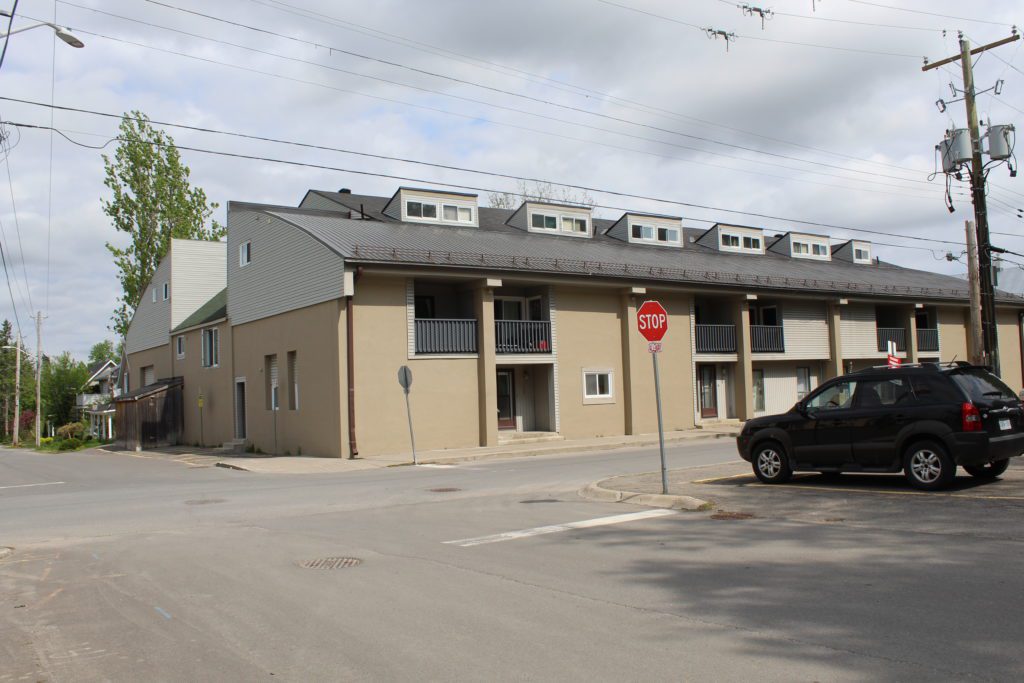

1908 Map: The map shows the corner of Asa and Thomas Streets in 1908. The Banks Livery is clearly a large operation, with the Leach Blacksmith and Machine Shop across the road. The Shop is marked as having electric power. By 1917, the Livery was completely gone, burned down a few years previously.







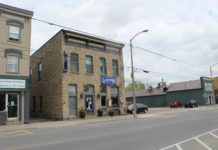
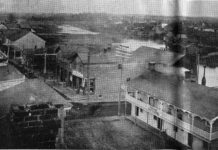
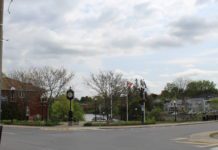
Mr. Shanahan,
My sister-in-law sent me a picture of an article you wrote about Kemptville’s Lost Heritage, which gave the history of Zechariah Leach who had a blacksmith shop in Kemptville. In the copy she sent me there was a picture of Zechariah Leach but when I look at your article on the North Grenville Times it only shows the picture of his blacksmith shop. Zechariah Leach was my husband’s great great uncle. Is there any way I can get a copy of Zechariah Leach’s picture to add to my genealogy database.
Thank you.